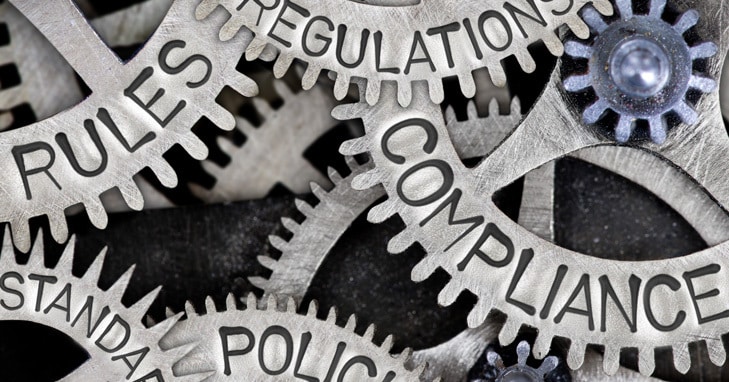Takeaway: Sustainability legislation is fundamentally reshaping Environmental, Health, and Safety (EHS) compliance, moving beyond traditional permits towards integrated reporting, transparency, and proactive risk management. Businesses must adapt by embedding sustainability into core EHS strategies, leveraging technology for data-driven insights, fostering a culture of responsibility, and viewing compliance as a strategic advantage. Key steps include gap assessments, robust data management, cross-functional collaboration, and proactive engagement with evolving regulations.
Sustainability Legislation: The New Legal Frontier for EHS Compliance
1. The regulatory landscape governing Environmental, Health, and Safety (EHS) is undergoing a profound transformation. Driven by global climate urgency, resource scarcity, and social imperatives, sustainability legislation is rapidly becoming the dominant force shaping corporate obligations. This new wave of laws doesn’t replace traditional environmental laws or health and safety standards; instead, it overlays and integrates with them, demanding a holistic approach to EHS compliance. The focus is shifting from mere adherence to permits towards demonstrating genuine environmental stewardship, social responsibility, and long-term resilience within a rapidly evolving regulatory framework.
2. This integration means environmental compliance is no longer just about avoiding spills or managing waste management correctly; it’s intrinsically linked to emissions reduction targets, resource efficiency goals, and comprehensive sustainability reporting. Similarly, health and safety compliance now extend into worker well-being programs, supply chain due diligence, and climate adaptation measures impacting occupational safety. Understanding this convergence is critical for businesses aiming to navigate the complexities of modern legal compliance.
Integrating Sustainability Legislation into Your EHS Strategy
3. Successfully navigating this shift requires proactively integrating sustainability regulations into the core of your EHS strategy. This means moving beyond siloed compliance activities. Your compliance strategy must evolve to encompass broader sustainability objectives mandated by law. Key actions include:
A. Conducting a Comprehensive Gap Analysis: Assess current EHS programs against emerging sustainability legislation requirements (e.g., CSRD, Californian climate disclosure rules, supply chain due diligence laws).
B. Aligning Objectives: Ensure EHS targets (like reducing incident rates or hazardous waste) explicitly support overarching sustainability legislation goals (like net-zero emissions or circular economy principles).
C. Elevating Governance: Assign clear accountability for integrated EHS compliance and sustainability performance at senior management and board levels, reinforcing corporate responsibility.
Key Sustainability Laws Affecting EHS Practices Today
4. Several landmark pieces of sustainability legislation are directly impacting EHS management globally. Understanding these is paramount for legal compliance:
A. EU Corporate Sustainability Reporting Directive (CSRD): Mandates extensive reporting on environmental impacts (including climate, water, biodiversity), social factors (including worker health and safety), and governance. Deeply impacts sustainability reporting requirements tied directly to EHS data.
B. EU Taxonomy Regulation: Defines environmentally sustainable economic activities, influencing investment and requiring companies to report alignment – demanding rigorous data on environmental impact, resource efficiency, and emissions reduction linked to EHS performance.
C. German Supply Chain Due Diligence Act (LkSG) & Proposed EU Corporate Sustainability Due Diligence Directive (CSDDD): Require companies to identify, prevent, and mitigate adverse impacts on human rights (including worker health and safety compliance) and the environment throughout their global value chains.
D. California Climate Disclosure Laws (SB 253, SB 261): Require extensive GHG emissions reporting and climate-related financial risk disclosures, impacting companies operating in California.
The Role of Corporate Responsibility in Meeting Sustainability Standards
5. Meeting these evolving standards is no longer just a legal compliance exercise; it’s a fundamental aspect of Corporate Social Responsibility (CSR) and broader corporate responsibility. Stakeholders – investors, customers, employees, communities – increasingly demand transparency and action. Robust EHS compliance under sustainability legislation demonstrates:
A. Ethical Leadership: Commitment to protecting people and the planet.
B. Risk Mitigation: Proactively managing regulatory, reputational, and operational risks associated with poor EHS and sustainability performance.
C. Long-Term Value Creation: Building resilient operations attractive to investors and talent. CSR initiatives are now often codified and mandated by sustainability regulations.

The Complexities of Meeting Environmental, Health, and Safety Standards
6. Integrating sustainability legislation into traditional EHS creates significant complexity for EHS compliance:
A. Expanding Scope: Regulations now cover the entire value chain (upstream suppliers, downstream customers), far beyond the factory fence line, complicating environmental compliance and health and safety compliance oversight.
B. Data Intensity: Meeting sustainability reporting mandates requires vast amounts of accurate, auditable data across diverse areas (GHG emissions, water use, energy, waste streams, safety incidents, supply chain practices) – a quantum leap from traditional EHS reporting.
C. Interconnected Risks: Climate change poses direct risks to health and safety compliance (e.g., heat stress, extreme weather impacts on facilities) and environmental compliance (e.g., water scarcity affecting discharges, increased flood risk). Sustainability legislation often requires assessing and reporting these interlinkages.
D. Evolving Requirements: The regulatory framework is dynamic, with standards and reporting requirements frequently updated, demanding constant vigilance and adaptability in compliance strategy.
Leveraging Technology to Enhance EHS Compliance Under Sustainability Laws
7. Technology is no longer optional; it’s essential for managing the data deluge and complexity driven by sustainability legislation. Modern EHS and sustainability reporting platforms are crucial tools for EHS compliance:
A. Centralized Data Hubs: Integrate data from IoT sensors (emissions, energy), ERP systems (materials, waste), incident management software, and supply chain inputs into a single source of truth for both traditional environmental compliance and new sustainability regulations.
B. Automation: Automate data collection, calculations (e.g., GHG protocols), and report generation (for permits and sustainability reporting), reducing errors and freeing up EHS professionals for strategic tasks.
C. Task Management: Track compliance tasks, audits, corrective actions, and training across all EHS and sustainability obligations within one system.
Data-Driven Decision Making in Sustainability and EHS Compliance
8. The true power of technology lies in enabling data analytics in compliance. Moving beyond simple reporting, analytics unlock insights critical for strategic EHS compliance under sustainability legislation:
A. Identifying Trends & Risks: Analyze incident data, emissions trends, energy consumption, and near misses to predict and prevent problems before they occur, enhancing both health and safety compliance and environmental impact reduction.
B. Optimizing Performance: Use data to pinpoint inefficiencies in resource efficiency, waste management, and energy use, driving cost savings alongside emissions reduction and environmental compliance.
C. Benchmarking & Goal Setting: Compare performance internally and against industry benchmarks to set meaningful targets aligned with sustainability legislation and corporate CSR goals.
D. Proving Compliance & ROI: Generate robust, audit-ready reports demonstrating adherence to both traditional environmental laws and new sustainability regulations, while also showing the business value of compliance investments.
From Local to Global: How Sustainability Legislation Impacts Your Business Operations
9. The reach of sustainability legislation is inherently global, even when enacted regionally. This creates a complex web for multinational corporations:
A. Extra-Territorial Effect: Laws like the EU CSRD apply to non-EU companies with significant turnover or listings in the EU. The German LkSG applies to the global supply chains of covered companies.
B. Regulatory Fragmentation: While core principles converge (climate, human rights), specific reporting requirements, thresholds, and timelines vary significantly across jurisdictions (e.g., EU vs. California vs. Asia). This fragmentation challenges a unified compliance strategy.
C. Operational Consistency vs. Local Adaptation: Businesses strive for consistent global EHS and sustainability standards but must adapt implementation to local legal requirements and operational contexts within the overarching regulatory framework. Managing this balance is a key EHS compliance challenge under sustainability legislation.
Steps to Ensure Compliance While Fostering a Sustainable Business Culture
10. Building sustainable EHS compliance requires both procedural rigor and cultural change:
A. Leadership Commitment & Tone from the Top: Executives and the board must champion sustainability and EHS as core business imperatives, integral to corporate responsibility.
B. Embed Sustainability in EHS Policies: Explicitly link EHS management system objectives (ISO 14001, ISO 45001) to sustainability legislation requirements and corporate goals.
C. Invest in Training & Awareness: Educate all employees – from leadership to frontline workers – on the interplay between their roles, EHS, and sustainability regulations. Foster ownership of environmental impact and safety.
D. Strengthen Supply Chain Management: Implement robust due diligence processes to assess and manage EHS and sustainability risks among suppliers, as mandated by modern sustainability legislation.
E. Enhance Stakeholder Engagement: Proactively communicate EHS and sustainability performance and compliance efforts to investors, regulators, communities, and employees, building trust and transparency.

Overcoming Regulatory and Operational Hurdles in EHS Compliance
11. Successfully navigating the sustainability legislation landscape requires tackling key hurdles:
A. Data Silos & Quality: Break down barriers between EHS, sustainability, operations, and finance data. Invest in data governance to ensure accuracy and completeness for sustainability reporting and EHS compliance.
B. Resource Constraints: Secure adequate budget and skilled personnel (EHS professionals, data analysts, sustainability experts) to manage the expanded scope of legal compliance.
C. Interpretation & Uncertainty: Emerging sustainability regulations often lack detailed implementation guidance. Engage with industry associations, consultants, and potentially regulators for clarity. Adopt a principle-based approach focused on materiality and continuous improvement within your compliance strategy.
D. Integrating New Requirements: Systematically review new sustainability legislation, assess impacts on existing EHS programs (environmental compliance, health and safety compliance, waste management), and update procedures, training, and monitoring accordingly. Leverage technology for scalability.
Looking Ahead: The Future of Sustainability Legislation and EHS Compliance
12. The trajectory is clear: sustainability legislation will continue to expand in scope and rigor, further integrating with and elevating EHS compliance. Expect:
A. Standardization (Gradual): Pressure will grow for global alignment of reporting standards (e.g., ISSB, ESRS) to reduce fragmentation, but jurisdictional differences will persist.
B. Increased Scope 3 Focus: Mandatory reporting and reduction targets for value chain emissions (Scope 3) will become more common, significantly impacting supply chain EHS compliance.
C. Nature & Biodiversity Reporting: Following the TNFD framework, reporting on impacts and dependencies on nature will likely be incorporated into future sustainability regulations, adding another layer to environmental compliance.
D. Enhanced Enforcement & Liability: Regulators will develop greater capacity to scrutinize sustainability reporting and enforce sustainability legislation, including potential director liability.
E. AI-Powered Compliance: Data analytics in compliance will evolve with AI, enabling predictive risk modeling, automated anomaly detection in emissions or safety data, and dynamic compliance monitoring.
Conclusion
13. Sustainability legislation is not a passing trend; it represents a fundamental reshaping of the regulatory framework for business. Its profound impact on EHS compliance demands a proactive, strategic, and integrated response. Businesses must move beyond viewing compliance as a cost center and instead see it as an opportunity to build resilience, enhance reputation, drive innovation in resource efficiency and emissions reduction, and fulfill their broader corporate responsibility. By embedding sustainability into the DNA of EHS management, leveraging technology for data analytics in compliance, fostering a culture of accountability, and continuously adapting to the evolving landscape, organizations can not only meet their legal compliance obligations but also thrive in a sustainable future. The integration of robust environmental compliance, health and safety compliance, and proactive sustainability reporting underpinned by a clear compliance strategy is now the hallmark of a responsible and resilient enterprise.

